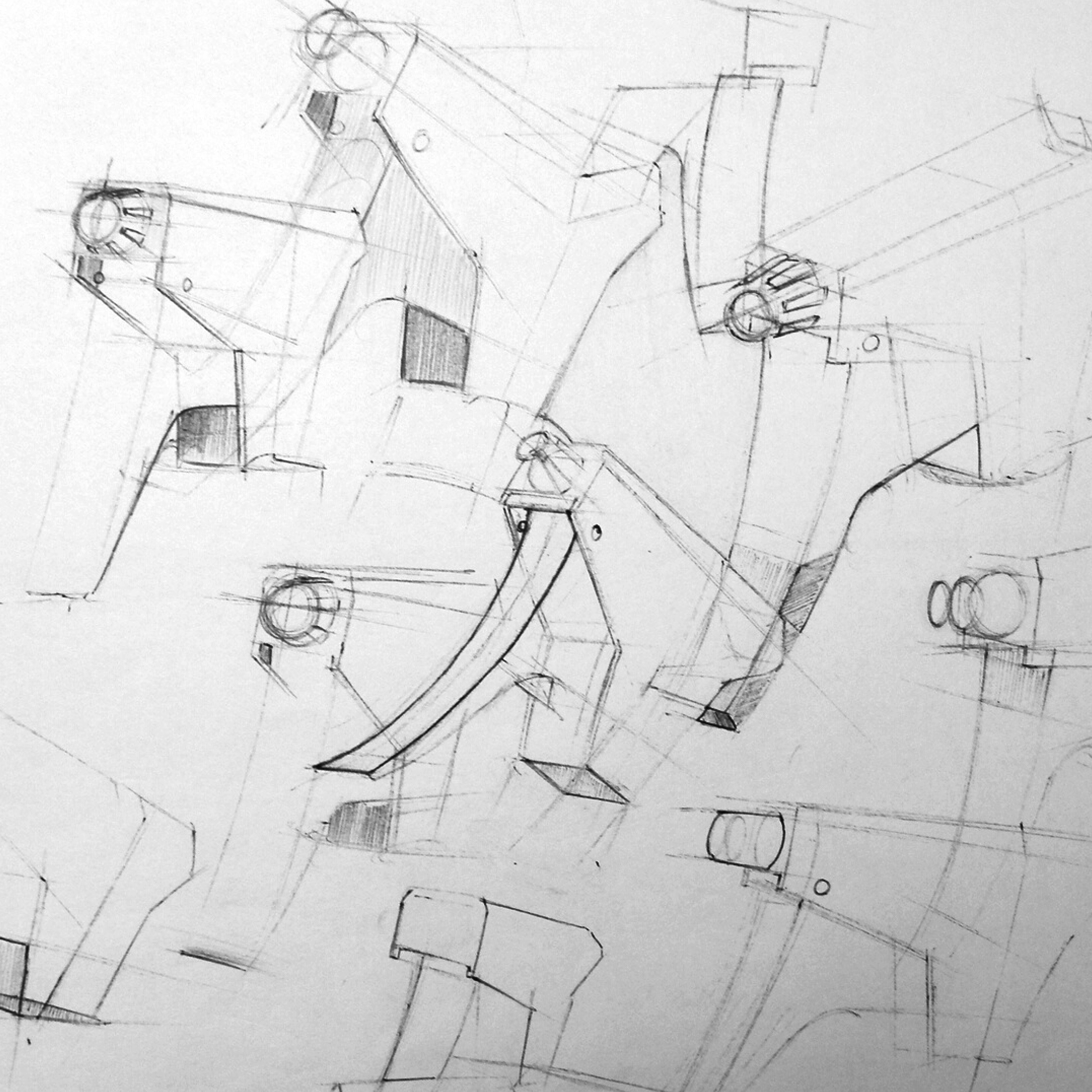
Step-by-step guide on entering a car design school
Hi- blog founder Lee here! If you are reading this in application season- good news! We have some advice for you. I will be offering some additional comments on this article (written by contributor Marco Braun. I spent many years on the other side of this process- as head of a Vehicle Design bachelor course, interviewing and selecting candidates. Some of the students I selected and taught now work for major OEM studios, such as Rolls Royce, Polestar, Volvo, Maserati and Koenigsegg. They also went on to complete Masters level courses to achieve this. I like to think I have a good instinct for candidates- and yes, there will always be human beings on the other side of every process such as this. It is never just by the numbers!
info about where I taught: Lahti Institute of Design
Lee
In this article, I will tell you all about the experience of studying transportation design. I myself was lucky enough to study at one of the world’s best universities for car design. However, many may not be lucky due to financial constraints. This is why I wrote this chapter. I will give you a complete overview of how to enter a car design school. After the chapter, you will know exactly how to enter the education program of an automotive designer and what really matters. You can set your priorities in your own design studies and adjust your skills. In this way, you will push your career towards becoming a professional car designer.
Where to study?
Where is the best place to study car design? Nowadays it is possible to study car design anywhere in the world. Whether it is in Brazil or India, talented car designers come from all over the world. The internet also makes it possible to learn online. On Instagram and Simkom you can see the status quo that should be achieved. However, there are still a few car design schools with an excellent reputation. The most successful car designers are graduates of those universities.
- Art Center College of Design The Art Center College of Design has been a leader in art and design education for nearly 75years.
- HFG PforzheimThe Pforzheim School of Design (Germany) is part of thePforzheim University of Applied Sciences. It is very competitive in terms of artistic aptitude
- CCS – College for Creative StudiesThe College for creative Studies is one of the leading arts education institutions. It offers courses in, Product Design and Transportation Design.
- Royal College of Art The Royal College of Art is the world’s most influential postgraduate institution of art and design. Find out about courses, research and innovation here.
- Strate, School of Design Top tier ranking of the best car designschools in the world.
Note, it is not important where you study, but what you make of it. It is beneficial to study at one of these schools because they are well known and attract many talented students. Also, they maintain close contact with major car companies. However, strict eligibility for admission, financial constraints or other personal reasons sometimes make it impossible to study at one of these schools.
If you don’t have the opportunity to go to such a school, I can tell you this: To become a successful car designer, the choice of university is only of little importance. Self-motivation and the unconditional will to work on one’s skill is more crucial.
For example, a former fellow colleague of mine failed 3 times in the artistic preselection exam in Pforzheim. After that, he tried the exam again even though it was forbidden to take more than 3 attempts. He failed. Then he studied interior design in an average design school and completing his studies, got a job as an exterior designer at a famous car manufacturer in Germany. He only managed to do this because he was determined to become a car designer.
On the other hand, for example, many of my fellow students were busy doing other things alongside their studies. Some spent a lot of time on hobbies, others worked part-time. They didn’t focus 100% on their design studies. They fell by the wayside later and couldn’t find an internship or job. Therefore, it is not important where you study, but what you do with your studies. Many roads lead to Rome.
Excellent advice and a good chapter here Marco. I will add:
Yes, it is true it does not matter where you study design, or even if you study car design as a specialist subject at all. All good design degrees can and should produce potentially good car designers. I also know car designers who did not study at all, that do not even have a bachelors degree! Most of the skill has to be self-taught, and certainly it requires a lot of self-motivation. There is however, one hugely important contribution that “famous” schools will add to your potential for success- and that is connections. It really is a matter of who you know in life, and the best schools collaborate closely with, are visited by, and are known intimately by other car designers and the studios they work in. There are truly excellent design schools (for example Steiglitz Academy in Russia) which are not listed here- but which strived to maintain close links with industry through alumni. The alumni network of a school is the most important factor for you in choosing where to study. One of the best Masters courses in the world right now is at Umeå University in Sweden- and I would strongly recommend it to anyone looking to study car design. Local connection with Volvo/Polestar but globally many other OEM studios make them a great choice.Lee
How to apply?
The application to a design college consists of 3 steps. First, the submission of the art portfolio. After the portfolio has been pre-selected, the artistic exam takes place. At the end a personal interview.
Art portfolio
If you are applying to a design school, you will need an artistic portfolio. Please gather information about the requirements of the respective university about like size, number and content that they require. Basically, it’s about showing your drawing skills and an interest in technical and artistic subjects. When creating your art portfolio, you need technical drawings such as objects and products AND also artistic drawings like drawings of people, hands etc. The goal is not only to show your passion for cars or industrial designs but also, to present your various artistic interests. Paintings, graphics or cartoon drawings do not belong in an art folder. You may decide to put in something like that, but only a few, to show the breadth of your abilities. From numerous portfolio discussions and preparation courses in which I have participated, I want to show you what really matters. The skills that should be shown in your artistic portfolio are also the basic skills for any car designer. Before you start studying car design, you should master those skills.
Here are some examples that you can use as a guide.

When you draw, you have to think about form as you want your drawings to show some volume. When you practice this, don’t stress the quality. Draw a lot, and quickly. Quantity over quality in this case. Take large-format drawing sheets and fill the whole sheet with sketches. Draw the same object several times in different views and perspectives.

Remember that it’s not about painting beautiful pictures. To paint beautiful pictures, you need two resources: patience and time. Maybe your grandma likes those paintings, however, if you want to develop a good understanding of form, it is useless. What you should also be doing is deconstructing objects. Think of each object as if it were made up of simple forms.

Seeing and grasping the forms correctly must be learned. The best way to learn this is to draw real objects. Do not use photos but use products in your environment. Why? The challenge is to transfer a three-dimensional object onto a two-dimensional canvas. Photographs have already anticipated this step.

You can also look at a real object from all sides and touch and feel it. You can turn and twist to be able to completely understand it three-dimensionally. Also, draw the object as if it were made of glass. Draw it in a transparent state and draw the hidden lines.

Pay attention to perspective and proportion. If the basic structure of your drawing is not stable, everything will fall apart visually and appear awkward. Therefore, pay attention to the correct perspective and proportion. Learn to study the relationships and distances between the individual shapes and transfer them to your drawing.
Qualifying Examination
After the portfolio has been pre-selected, the artistic exam takes place. The test differs from school to school. At the university in Pforzheim, it lasted one day. I was sitting in the same room with other competitors while we were working on several tasks. The first assignment was a still life that had to be drawn in 1 hour and 30 minutes. The next task required drawing a scenario out of the imagination, like an airport operation or a rush hour in the morning. A third task related to the specific subject is “automotive design”. In my exam car seats were brought in, which required to be drawn descriptively. Descriptively means to draw in perspective and from different views and angles.
If you pass the exam the first time, do not hang your head. It is not uncommon for the university to test whether you have stamina and can meet the high demands of the course.
Expert Discussion
After the exam, you will have an individual or group interview with the tutors. They will check your subject-specific general knowledge related to automobiles/automobile design. They will ask basic questions such as, “name three famous automobile designers” or “what is ABS”. Here you should show that you are enthusiastic about an automobile and motivation making it clear that you are the right one for the program.
braunmarco.com
The actual application process varies a lot- as Marco rightly pointed out. The advice here regarding drawing of 3D form is excellent- as that is what all designers are judged on. Often, young people mistake a portfolio to mean a list of achievements, or artworks that took the most time. Effort is not the key metric or measurement used by design schools to judge you. Quality and understanding of the world is. A portfolio of photography for example- is not going to get you into a car design school. Lastly- what is termed “expert discussion” here usually takes the form of an interview. This is sometimes a group, but often a one to one chat- and for example in my own process of selecting Vehicle Design candidates this was one of the most crucial steps. Attitude, knowledge, previous skills, or just simple enthusiasm for design- are all assessed in minutes during any interview. Interviewers are trying to asses your commitment and motivations- not just your knowledge. Personally I value wide knowledge, travel, reading, and broad observations of the world as these are what make a good designer in any genre. I also asked questions that are not as related to cars as Marco has explained. A good school will seek this type of student. Be wary of narrow- technical questions- this is perhaps indicative of German engineering based thinking, but other schools may have a much more open approach. Most importantly, always be yourself in interviews- do not try to speak or act in a way that you think the interviewer wants you to. If a car design school does not select you- maybe that career is not something you will enjoy or be dedicated to. It really is a case of 110% commitment and determination- and if you are not in that frame of mind, you will need to wait until you are. If you are ready for this career- they will know.
Lee


